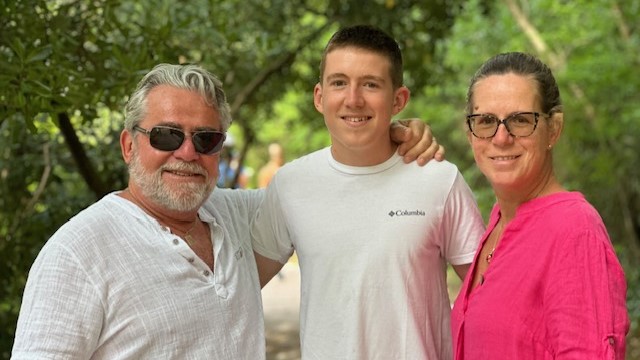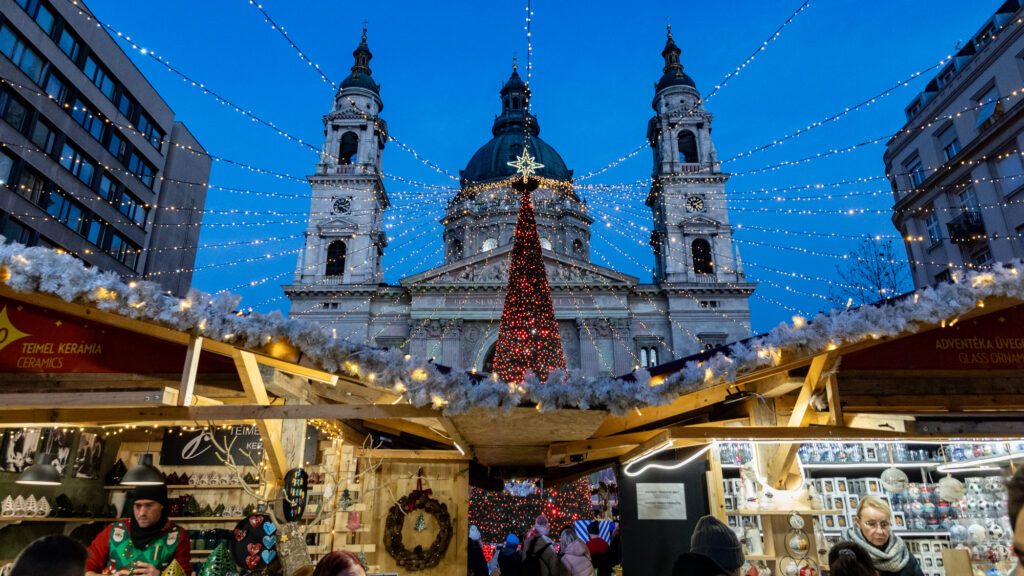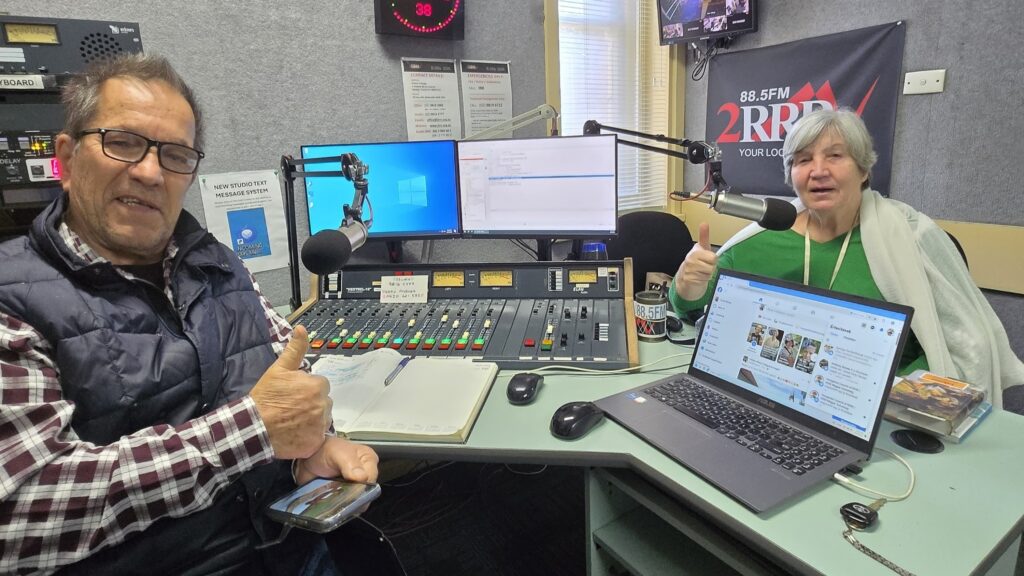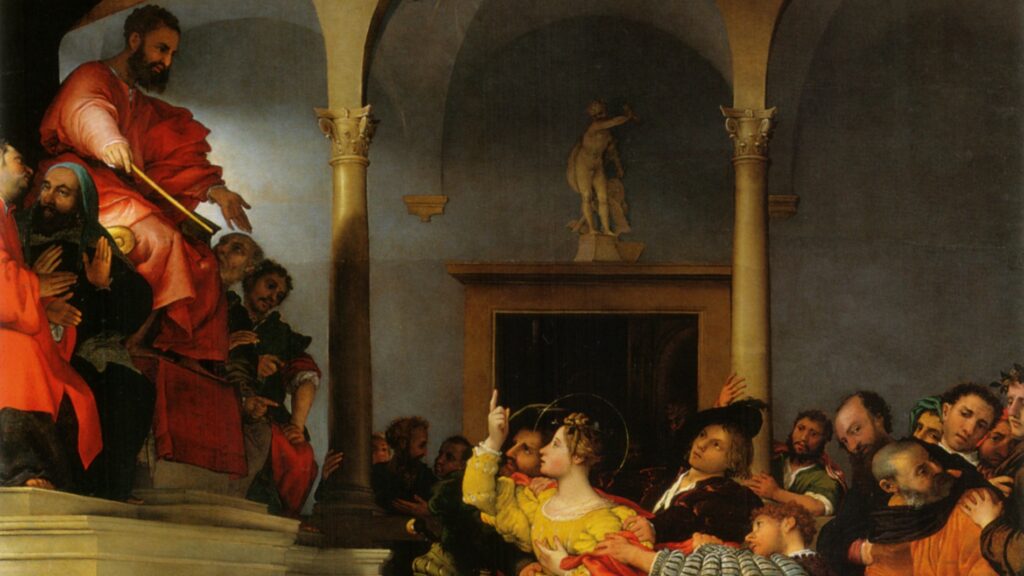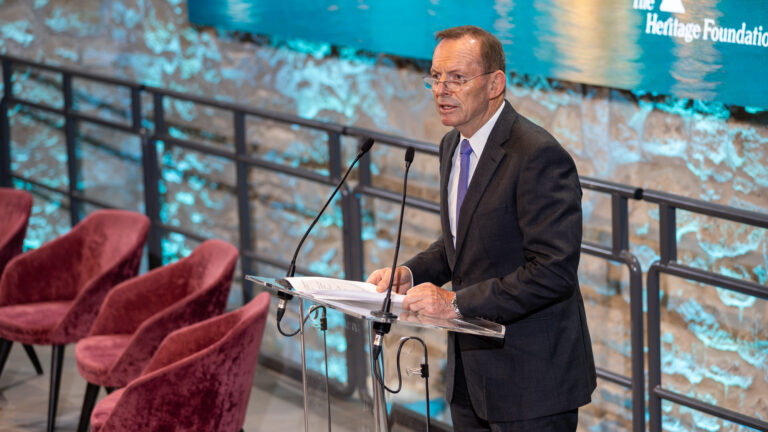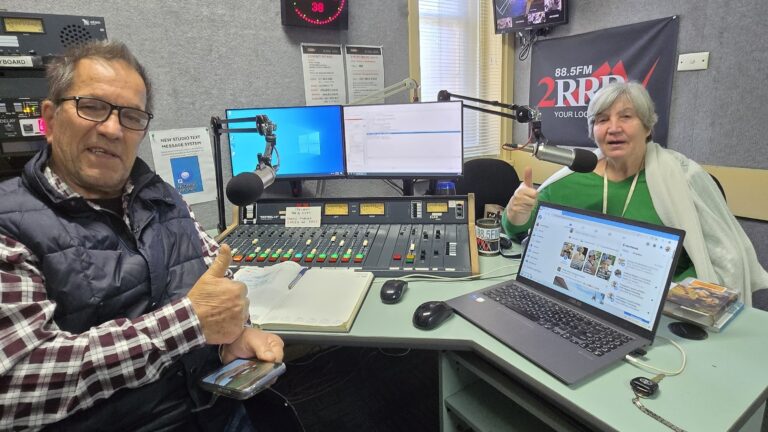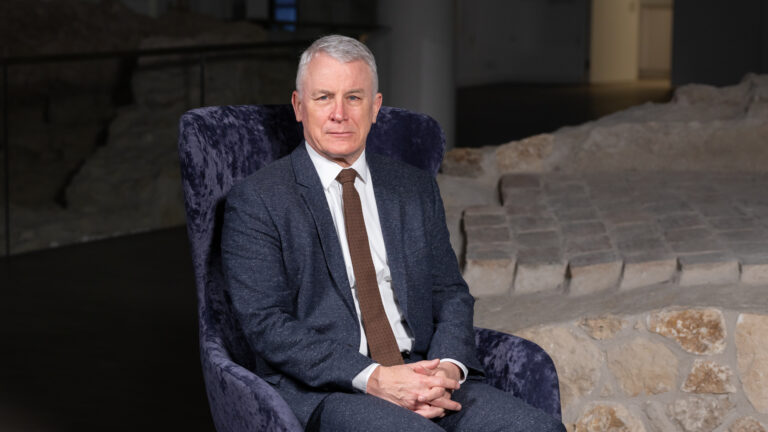Zsuzsa Csajkás first learned to be independent in ski camps in Transylvania and then upon moving to New Jersey at the age of 17 on her own. At the outset, she came to work as an au-pair for the summer vacation but ended up staying for her studies. She finished her university studies in Florida, where she pursued a business career, and became involved in volunteer work as well. A few years after the birth of her son, she co-founded the South Florida Hungarian Kids Club and later the Hungarian Chamber of Business and Commerce in Florida.
***
Why did you come to and stay in America at such an early age on your own?
I was born in Csíkszereda (Miercurea Ciuc, Transylvania, Romania) and raised in Sepsizentgyörgy (Sfantu Gheorghe), where my father got a job as a veterinarian. We had a distant relative living in Paramus, New Jersey, who invited me in 1992 to look after their little daughter. I was 17, fluent in German but didn’t know any English. I didn’t drive, so apart from seeing a few tourist attractions in New York City, I hadn’t experienced much of America. I decided to stay longer and asked for a deferral at my school back home. Being a year behind wasn’t a problem for me, since I was aware that I’d have many more job opportunities when returning to Romania with English fluency under my belt. Nevertheless, at the beginning, weekends were terrible: I didn’t know anyone, I couldn’t go anywhere. However, since communication with friends back home in those days meant physical correspondence, I could imagine what they were doing, but I didn’t have to face it all the time, as we do today. I put emphasis on my language learning goals and I took care of the household. It was a boring life for a teenager, but at least I didn’t have time to think too much… I grew up as a ski racer, we spent most of the winter months in the mountains, in ski camps where we didn’t have parents with us, we had to take care of ourselves. Skiing itself is a tough sport, which made me more trained and independent than the average of my generation, but independence is also in my core. I was allowed to call my parents once a month for five minutes, so we didn’t have long discussions. I informed them that I’d like to stay for another year, and they replied: if that’s what you want, go for it.
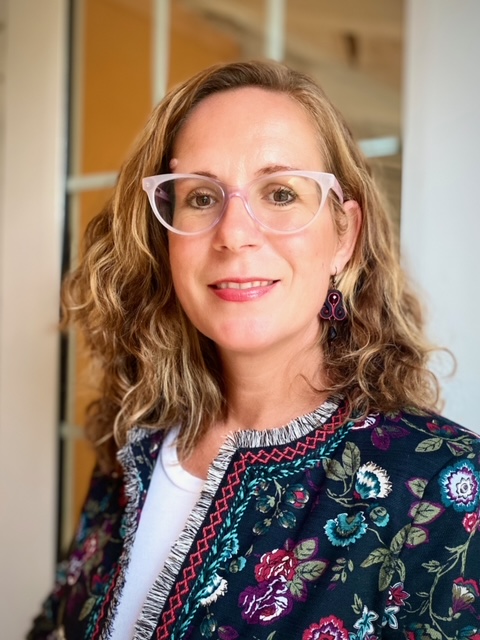
You didn’t return even after the first year. Why?
Since my English skills developed rapidly, I decided to earn an American high school diploma. I couldn’t go to school, but I could learn the material at home and then take the test. In principle, it shouldn’t have been difficult, because for instance the math requirements were close to those of eighth-grade level in Romania, but understanding and writing more complex texts were challenging because of my language limitations. I came a few points short on the first exam. After a few months I tried again and got through. Then I applied to the local community college, where most of the applicants are accepted. I had a minimum score but was paying double tuition as an international student which was a good deal for them. After the two years, I had no hesitation about staying further, since I took my final exams with the aim of being accepted to a college and then returning home with an American university degree, which I thought would have been a really big splash to start up a career back home. I first wanted to become a kindergarten teacher, but it quickly became clear to me that the salary they earned wouldn’t be enough for me to support myself as a single woman. I chose to study business. After graduation, I continued my studies at Montclair State University, specializing in international business. I also worked to support my studies by having administrative office jobs.
Why didn’t you return home afterwards? How did you end up in Florida?
My boyfriend at the time had been previously living in Florida and was very eager to return, so I moved to Miami with him. I finished my last year at Florida International University in 2000. Meanwhile, my father’s name was drawn in the green card lottery. My parents didn’t want to move to America, but I really wanted to get a green card because it would mean a significant decrease in my tuition. We agreed that my parents would move to New Jersey, also giving my younger brother the opportunity to learn the language and go to high school and university in the U.S. My dad was able to get a job as an assistant at a veterinary hospital right away, even with minimal English skills. After a few years he was able to perform veterinary duties. My parents weren’t at all happy about my moving to Florida, but eventually when I got married, they came here, too. They lived in America for 15 years and moved back to Csíkszereda when they retired. My brother also moved to Florida and stayed here, he lives half an hour away from our current home.
How did your professional and private life turn out in Florida?
During my university studies, an agency sent me to work for Royal Caribbean Cruises. When I got my university degree, I was offered a job in the procurement department, which I gladly accepted. It was one of the biggest companies in Florida, with 3,000 employees at the time. It was a wonderful career start! I worked in several departments and ended up managing contracts worth tens of millions of dollars. By then, I lived alone. I enjoyed very much being a financially independent woman and making up for all the experiences I had missed out on previously. I enjoyed travelling a lot to exotic islands and trade shows.
My husband, Ernő Csajkás, who graduated from the Faculty of Engineering at the University of Technology back in Budapest, is an entrepreneur and business consultant. As the son of a hospital director in Szabadka (Subotica, Vojvodina), he studied in England at the age of 16, and travelled a lot across Europe with his family. He always wanted to come to America. He first came to Ohio State University to teach, but when he got to Florida, he decided to stay here. By the time I met him, I was 30 and knew what I wanted. We got married and our son Kristofer was born in 2006. Since I had already seen what it meant to have au-pairs raising your child, I wanted to raise him myself so I gave up my business career.
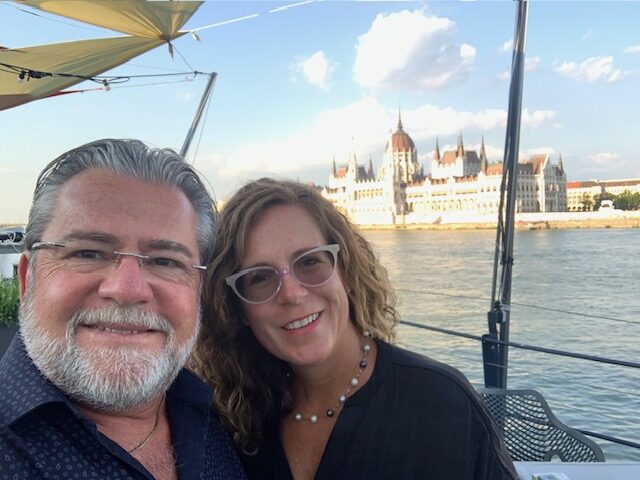
When have you contacted local Hungarian Americans?
There is an old Hungarian House at the Reformed Church in Miami, but there were mostly seniors attending the events and they didn’t have any programs for children. Over time, we made a lot of friends, but not many Hungarians. But when you have a baby, you start looking for a community where you can meet other Hungarian moms and kids. I always spoke to my child in Hungarian, read Hungarian stories and sang Hungarian songs to him. When a lady from our neighborhood contacted me in 2008 looking for Hungarian families with young children to have meetings on Saturdays at a city library in Boca Raton, we joined them. We sang songs, told poems and stories, and played lap games for and with our children. Meanwhile we got to know each other. Later, we moved to a nearby park pavilion and started organizing the meetings on the meetup interface, where we had to give a name to our community. That’s how we launched the South Florida Hungarian Mommy Club. We went to museums, zoos, theatres, playhouses together. The programs were loosely organized, without timetables or themes, the only real point was to meet weekly. But we took some scissors, glue and colored paper with us for various handicraft activities or games to celebrate the actual holidays. It went on like this for a few years, when we noticed that over 100 families had joined our circle and we had 30–40 children of school age around us…
Is that when you got the idea to open a school?
Yes. We got together with three other mothers to discuss where we could rent a room, how much it would cost, how we could afford it, etc. We needed at least ten children to pay the rent. We found a ballet studio in Boca Raton, signed a rental contract with them and started the school in 2015. But before that, four of us met and talked a lot weekly about our school plans and desires. Meanwhile, we got to know each other very well and learned how to work together. There was not much overlap or arguments. We loved what we were doing, so it wasn’t difficult for us to volunteer, and occasionally we could take over each other’s tasks, too. Later, once we were all back to work and we didn’t have so much time to meet, we were able to run a big event without previous lengthy discussions—we understood each other even from half words and gestures. My job has been to run the school, design, communicate and manage its programs, raise funds and sign contracts. I currently teach only when I have to temporarily cover for someone.
Every weekend school has a slightly different priority. What’s yours?
We’ve been thinking a lot about this. We decided to have a community-based school, meaning that our primary goal is to maintain and expand the Hungarian family community in South Florida and to pass on as much of Hungarian language, culture and traditions as possible. All classes are in Hungarian, there are lots of games, but also worksheets that are done in small groups. There is no homework. There are two teachers in each class the number of which varies from 8 to 14, depending on the total number, age and language knowledge of students enrolled. We accept children between the ages of four and 16. It’s very important that they have a good time with us on the sixth day of the week, but my main goal is that they should be able to take something home with them. When they’re older, hopefully they’ll appreciate what they’ve learned here about their Hungarian roots, i.e. about the history, language and culture of the country their (grand)parents came from. Every two weeks, for a total of five hours a month, we teach them the alphabet and how to read, but we can’t guarantee that they will read or write correctly. We also want them to have a basic knowledge of literature, history and geography, but we don’t have the opportunity to go into these subjects in depth. They’ll learn a poem or two, but we don’t have enough time to teach them about the poets’ lives and works. They’ll be able to read short stories, signs, maps and menus in restaurants in Hungary, but they’ll read Hungarian novels or later official documents only if their parents are committed to read a lot with them as well.
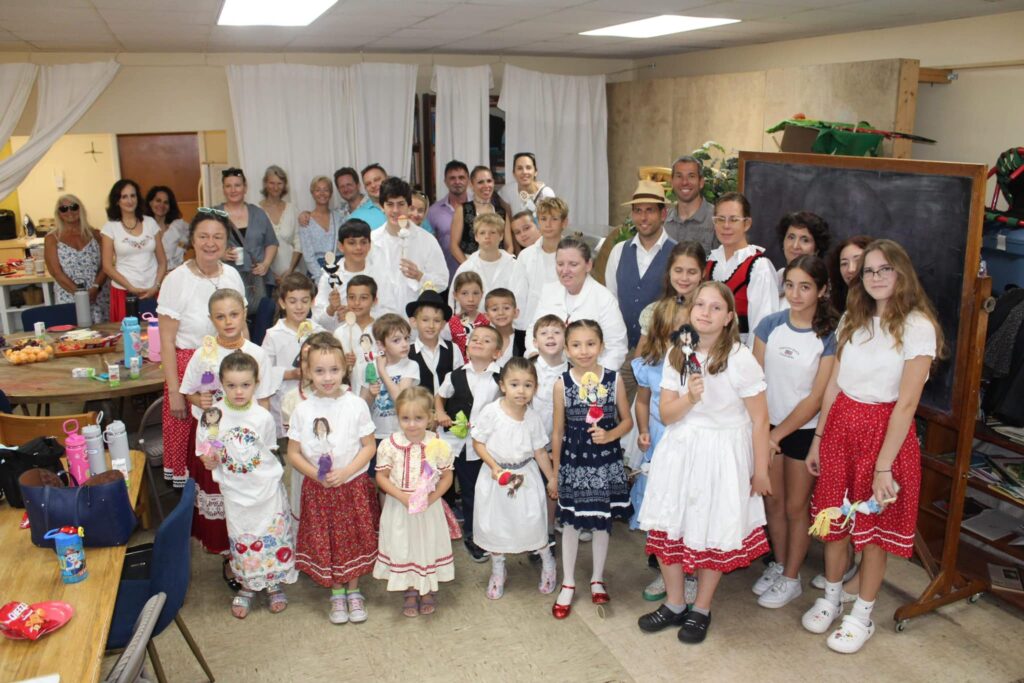
The location of the school changed frequently at first. Why?
For various reasons. The ballet studio was very strict, so the subsequent year we moved to the building of South Tech Academy. The year after we moved again since we were able to rent a beautiful historical school building in Daytona Beach called the Creative Art School, with several classrooms and a large courtyard. It was suitable also for parents due to its proximity to downtown. We had three classes there and even started an adult class one year. Our peak was 42 enrolled students. We changed our name to the Kids Club and had a nice logo. I started attending the HATOG conferences organized by the Hungarian American Coalition (HAC), and also the American Hungarian Schools in America (AMIT in Hungarian) meetings in New York to see what we could learn from other weekend schools. I’ve always had very positive experiences with the leaders of the diaspora communities here, especially school leaders. They’ve always been helpful. I’m very grateful to be part of such a community. We organized our first camp. We’ve invited lecturers from time to time and kept collecting supplies. Whenever we travelled to Hungary, we always brought an extra suitcase with teaching materials, workbooks, board games, slide projectors, and materials for our dance costumes.
You organize camps for students and even excursions for teachers. Unusual.
These are family camps, we don’t take responsibility for camping with only the children. We usually rent the sites from scout groups at a reasonable price, but we wouldn’t be able to have these without the Hungarian state’s grants we could apply for as soon as we became a non-profit organization in 2015. We’ve organized three camps so far. It’s a lot of work, but it’s a great community-builder opportunity. We get up and go to bed, eat and play together all day. In the evenings there was always a campfire, with deep conversations and cheerful singing. We tried to put together Hungarian menus that are healthy and children also like. Eating healthy is very important to me and is one of the school’s missions. When we met in the parks back in the day, we didn’t bring chips or muffins, but fruit or some healthy Hungarian food. As for the teachers, everyone works as a volunteer. We started with these principles and they didn’t change when we became a school. I’ve observed several other weekend schools and I’m still convinced: volunteering has a lot of power. However, when we apply for grants, we can also apply for some teachers’ honorarium. Nevertheless, our teachers suggested that we should spend that money on a field trip together instead of sharing it among them. The first weekend was such a good experience that we decided to make it a tradition. The power of a team building weekend is fantastic, it gives us the opportunity to think deeply and talk honestly about the challenges we face and everything else that is school-related. The founding teachers are still essential leaders of our community.
This ‘golden age’ came to an abrupt end by Covid. What’s happened since?
We were among the first to move to online education, for which we received a lot of help from AMIT and our Kőrösi Csoma Sándor Program intern at the time. In Florida, we were lucky with the looser rules compared to other states. In addition, by then we had formed a very cohesive community, so we were less shaken by the pandemic compared to other Hungarian communities. For example, moms had an online cocktail evening every Friday, which also helped us to cope with the psychological difficulties caused by the pandemic. Many of them said that we were their only social contact and support. Education was able to restart in autumn 2021. Our new location was a Waldorf school in Boca Raton, where one of our teachers, Olga Domokos, had previously been the principal. It’s not downtown, but close to Highway 95, has several classrooms for rent, one with a kitchen. They have a very good playground where we can organize many of the activities we used to do in parks. We enjoy our new location very much. We have at least 10 new families this year. There are 12 students in the small, 14 in the middle and 8 in the large group, which will probably grow by at least one or two in the next few weeks.
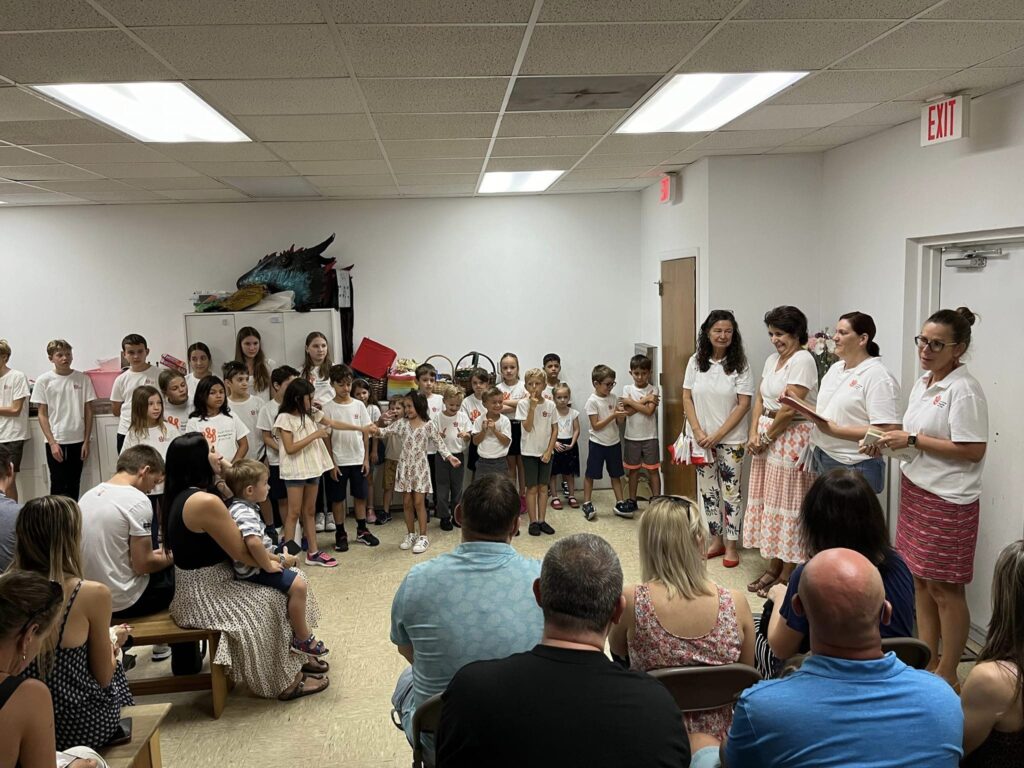
Have you been able to use your professional background to run the school?
Royal Caribbean ran an annual volunteer program for office staff called Give, signifying the company’s way of giving back to the local community. Each department was responsible for a one-day volunteer project, such as painting a school. The day was rounded off with a huge company picnic, a joint celebration. I was the volunteer organizer for my department for a couple of years. It was a great experience giving me a lot of strength and confidence to cope with the volunteer world later. I have also brought from my corporate background the need for proper planning and delivering quality service, which is necessary for the success of non-profit organizations, too. These should be treated as a business: if you don’t invest time, energy and financial resources, you won’t get a pay-off. My experience is that not everyone in the Hungarian diaspora communities realizes this. Not everyone understands that you can’t organize an event in the same way as 50 years ago; you have to innovate and invest financially to make it work today. On the other hand, I’ve observed other non-profit organizations and it’s always been clear: where money dominates, the essence of volunteering is lost. Our own children have outgrown our school, but we’re still there every Saturday… It’s a wonderful experience to see the commitment, preparation, the heart and soul that every one of our six teachers put into it. That’s something that money can’t buy…
You have another professional volunteer job: the Hungarian Chamber of Business and Commerce in Florida. Where did this idea come from?
Ever since she’s lived here, Honorary Consul of South Florida Pazaurek Piros has had various business and higher education initiatives for local Hungarian Americans. Florida has some 110,000 Hungarians, including lots of small and large business owners or managers. There was a need for an organization to reach out and connect these businesses owned or run by people of Hungarian origin, as well as to serve as a commercial and business link between Hungary and Florida. I’ve been approached to join as I’ve been a community leader for many years and have a wide network of contacts. Yet, I was hesitant. I have a business background, however I didn’t move in those circles for a while. After much discussion, I decided to step back from the school and lead the chamber initiative. However, my school colleagues were very reluctant; they promised me everything just to remain the principal. I didn’t have the heart to leave the school altogether…
But you didn’t quit the Chamber either… What happened to that?
The seven founding members include Piros and her husband, entrepreneur Gábor Tóvári-Nagy, and trade attaché Anikó Kubatov. In the beginning, Anikó was the driving force. We set up working groups to figure out what the Chamber would represent, how we would operate, what our goals were, etc. Our plan is to have three centers: Miami–Fort Lauderdale, Daytona–Orlando and Sarasota, functioning independently, but with the same goals and vision we started. We set off in early 2020 with a big swing, but Covid abruptly stopped us, too. People reset their priorities and it was harder to run a new initiative with the same commitment. We had our first major online program in May 2021 to provide as much information as possible to the 15–18 Hungarian companies participating. We hosted Happy Hours, wine tasting events in both Miami and Daytona Beach areas. We received a few enquiries and organized a few events on our own and are actively looking for volunteers to join our efforts. We still see the value of the Chamber and the need for its services, so next year, when my son is going to university, I might devote more time to this, if no one else volunteers to run it until then…
Read more Diaspora interviews:

